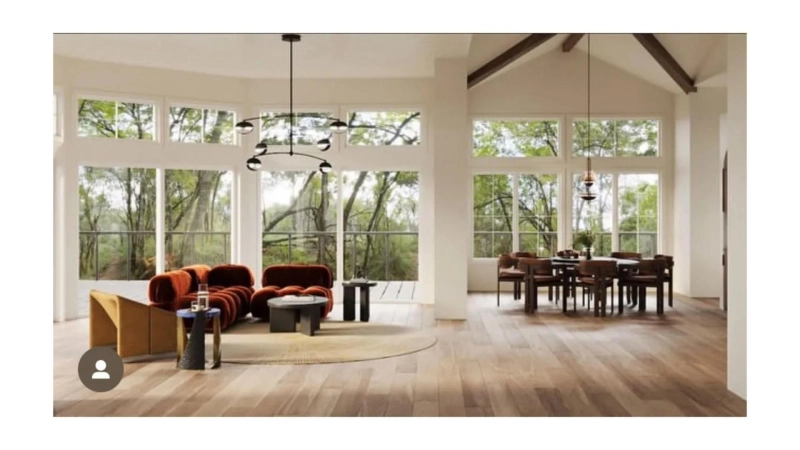Living in a small space doesn’t mean you have to feel cramped. The right interior design choices can make a room feel open, airy, and inviting. Whether you’re decorating a cozy apartment, a mountain cabin, or a compact home, smart design strategies can transform the space. If you’re looking for expert help, professionals specializing in interior design in North Lake Tahoe can create layouts that maximize space without sacrificing style.
1. Choose the Right Color Palette
Colors have a huge impact on how a space feels. Lighter shades make a room feel open, while dark colors can make it seem smaller. Here’s how to use color to your advantage:
- Stick to neutral tones like white, beige, or soft grays to reflect light.
- Use cool shades like light blues and greens for a more spacious feel.
- Try monochromatic schemes—using different shades of the same color creates a seamless, expansive look.
If you want to add bold colors, use them as accents in furniture, artwork, or rugs rather than on large surfaces like walls.
2. Maximize Natural Light
Natural light instantly makes a room feel bigger and more inviting. If your space has windows, make the most of them:
- Use sheer curtains instead of heavy drapes to let in more light.
- Place mirrors across from windows to reflect light and create depth.
- Choose glossy finishes for surfaces like tabletops or cabinetry to bounce light around the room.
If your space lacks windows, well-placed artificial lighting can mimic the effect of natural light.
3. Use Multi-Functional Furniture
Furniture that serves multiple purposes is a game-changer in small spaces. Some smart options include:
- Storage ottomans that double as seating.
- Wall-mounted desks that fold away when not in use.
- Expandable dining tables that adjust based on your needs.
- Built-in storage under beds or sofas to keep clutter out of sight.
The goal is to keep furniture functional without overwhelming the space.
4. Optimize Furniture Placement
Where you place your furniture matters. A few small tweaks can make a room feel larger:
- Pull furniture away from the walls—a little breathing room around pieces creates the illusion of space.
- Use low-profile furniture—sofas and beds with shorter legs allow for more visual openness.
- Avoid blocking windows—keeping sightlines open makes a room feel more expansive.
Interior designers specializing in interior design in North Lake Tahoe often use layout tricks to enhance the feeling of space in mountain homes and cabins.
5. Incorporate Vertical Space
When floor space is limited, think vertically:
- Use tall bookshelves to draw the eye upward.
- Hang floating shelves for storage without taking up floor space.
- Choose floor-to-ceiling curtains to add height to the room.
Vertical elements naturally make a space feel taller and more open.
6. Choose the Right Flooring
Flooring can affect how big or small a space feels. To create a sense of continuity:
- Use the same flooring throughout multiple rooms to avoid visual breaks.
- Opt for large-format tiles or wide plank flooring to create an expansive effect.
- Arrange rugs strategically—placing a rug under furniture rather than in the center of a room can make it feel bigger.
7. Keep the Space Clutter-Free
Too many items can make a small space feel chaotic. Here’s how to keep things tidy:
- Use hidden storage—furniture with built-in compartments keeps clutter out of sight.
- Limit decorative items—choose a few statement pieces rather than filling every surface.
- Adopt a “one in, one out” rule—whenever you add something new, remove an older item.
A clean, organized space always feels larger than a cluttered one.
8. Choose the Right Patterns and Textures
Patterns can add character, but they need to be used carefully in small spaces. Here’s what works best:
- Vertical stripes—they create the illusion of height.
- Small-scale patterns—large prints can overwhelm a compact space.
- Glass and lucite accents—transparent materials keep the room from feeling crowded.
Mixing different textures, like smooth leather and soft linen, can also add depth without overwhelming the room.
9. Use Statement Pieces Instead of Many Small Decorations
Instead of filling a room with lots of tiny decorations, go for one or two standout pieces. A large mirror, an oversized painting, or a striking light fixture can create a focal point without making the space feel cluttered.
10. Keep an Open Layout
Whenever possible, an open floor plan makes a home feel more spacious. If walls aren’t necessary, consider:
- Using open shelving instead of closed cabinets.
- Choosing furniture with open legs to allow light to pass through.
- Defining spaces with rugs instead of bulky dividers.
Even in small homes, a sense of openness makes a big difference.
Final Thoughts
Small spaces can still feel stylish, airy, and comfortable with the right design choices. By using light colors, maximizing natural light, choosing smart furniture, and keeping the layout open, you can create the illusion of a larger space. If you want expert guidance, professionals specializing in interior design in North Lake Tahoe can help design a home that feels spacious, even when square footage is limited.



